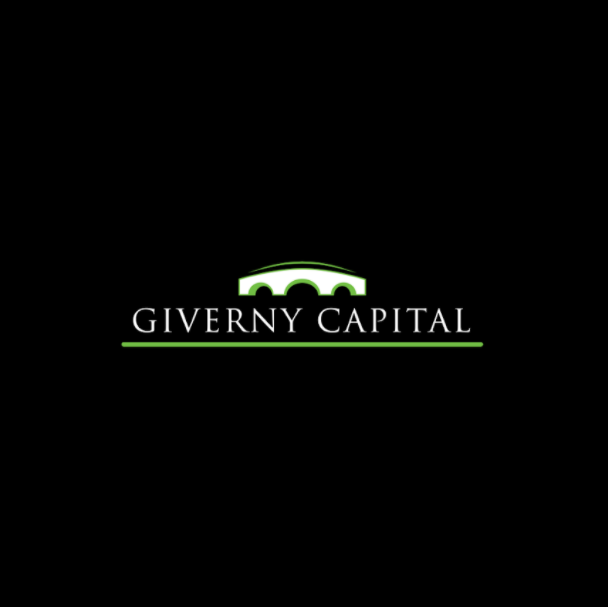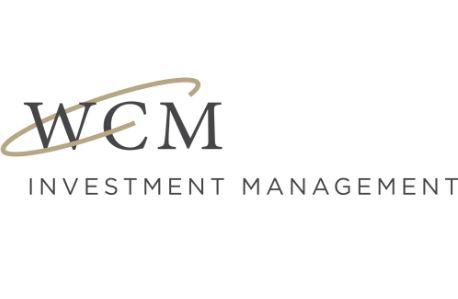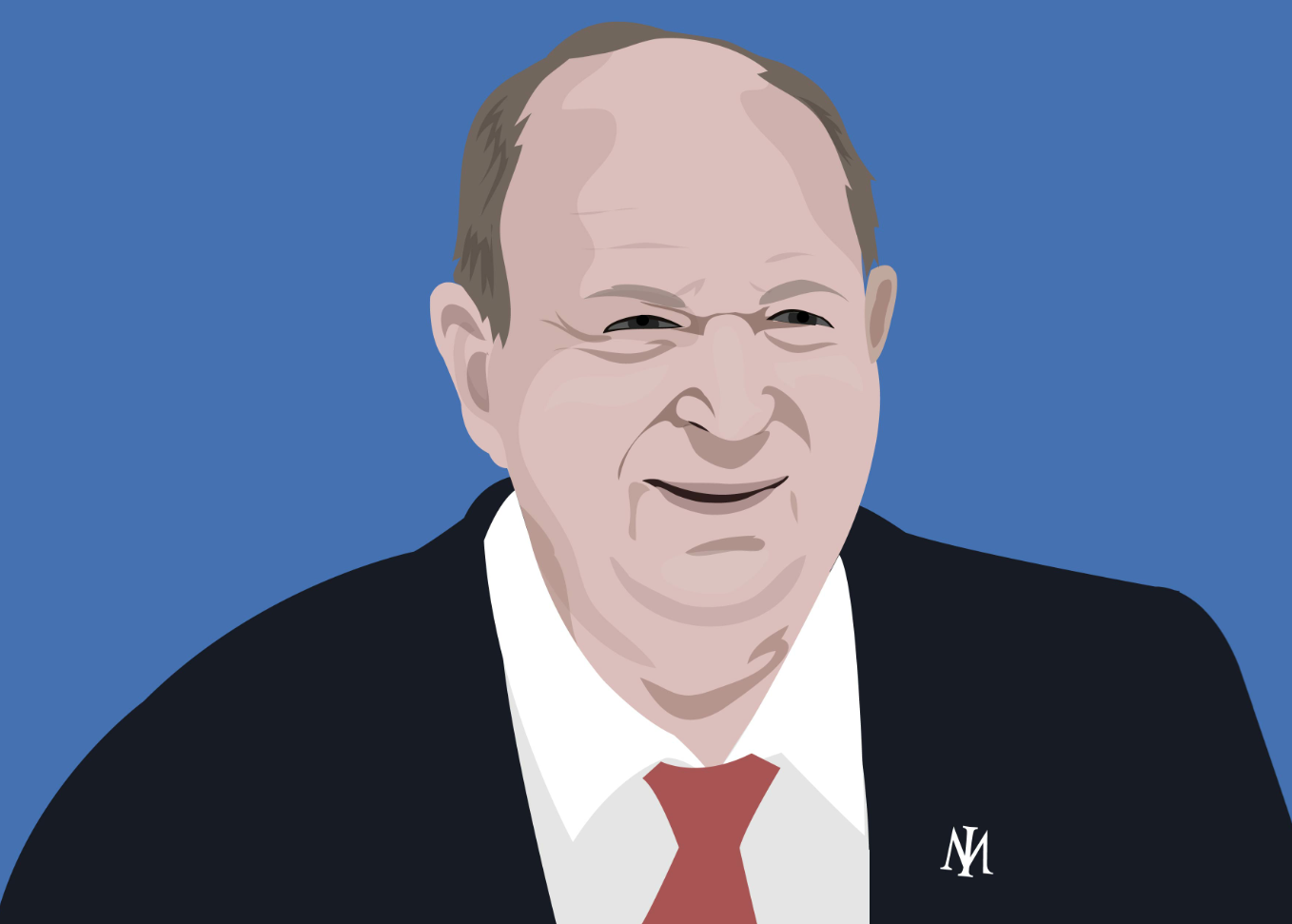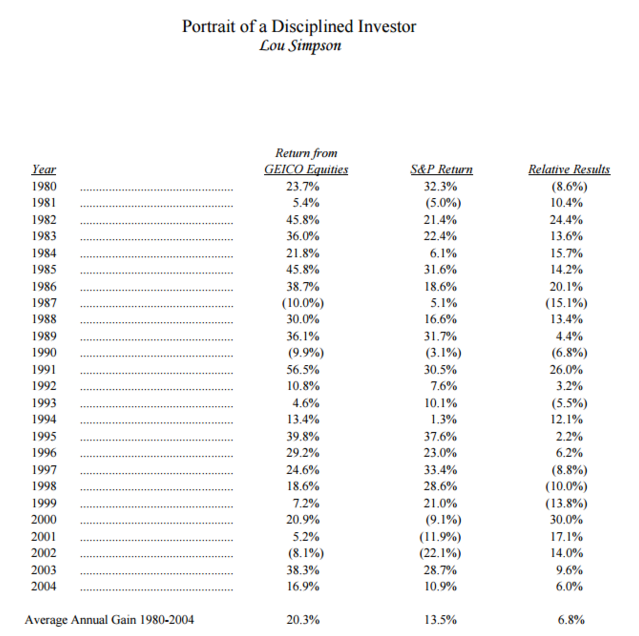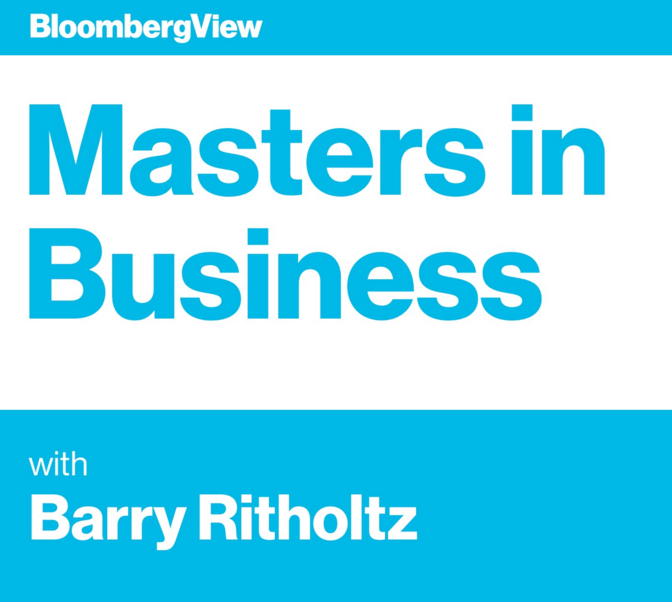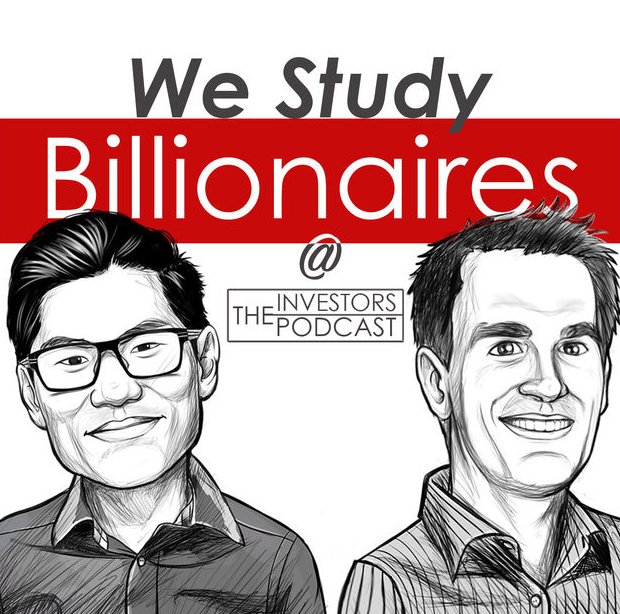Learning From Peter Keefe
It was the beginning of the world’s biggest investing event of the year, and Omaha had once again opened its arms to an army of investors eager to hear Warren Buffett share his investing insights, life lessons, and worldly wisdom. This year, my three adult children joined me on a tour to meet some of the world’s most successful investors.
Our day began with breakfast, where we were joined by Chuck Akre, who arrived relaxed, dressed in a light blue cashmere jumper and denim jeans. Chuck casually mentioned he had invited a friend to join us. We were about to spend the next hour in the company of two investing legends.
Chuck Akre and Peter Keefe captivated us with stories of their investing endeavors, philosophies, and the timeless lessons that have shaped their careers. Both share a philosophy that has allowed them to outperform the S&P 500 over decades. Their rapport was closer than mere friendship, rooted in a shared history—Chuck had hired Peter early in his career as a stockbroker.
Over decades of studying successful investors, I’ve found that many approach investing with a fresh perspective, unburdened by the constraints of typical business courses. This unique viewpoint often allows them to spot opportunities that others might miss, and both Peter and Chuck exemplify this perspective.
Peter has spent over three decades in investing, outperforming the S&P 500 by approximately 2.5% per annum. Having followed his letters for years, I admire his approach, which is deeply rooted in multidisciplinary thinking and a keen focus on finding and holding great businesses. Peter emphasizes the importance of visionary leadership, long-term value creation, and a disciplined approach to managing market downturns.
Peter and Chuck made an excellent pair of conversationalists, and our exchange was both insightful and engaging. As our conversation drew to a close, I asked Peter if we could continue our discussion in the future. The following points are drawn from that recent chat and offer a glimpse into his investment philosophy and experiences. I hope you find them as enjoyable and enlightening as I did.
On Education & Liberal Arts
“When I got into the business, I had never set foot into a business or an accounting classroom. I was a politics major in college and I was an uninspired student, to put it mildly. So I had this liberal arts background, but as you point out, I think a lot of terrific investors have come from a non-linear or non-analog background, as I call it.
In fact, I think sometimes the accounting or business administration, finance, MBA, and CFA, channels you into a way of thinking that is not necessarily productive to creating great investment results. Sometimes when you don't know what you don't know, it's an advantage.
When you approach investing from a liberal arts standpoint, you bring in a lot of different disciplines. And of course, the late Charlie Munger talked about the advantages of a multi-disciplinarily approach. So I think it can be an advantage to not have, for example, the accounting skills. I'm not disparaging the accounting trade at all, but it is a trade and you can learn the skills.
I was entirely self-taught with respect to accounting. In fact, Chuck Akre hired me as a stockbroker at Johnston, Lemon and Company in 1981. I'd been briefly with another firm, but it was on the cusp of a significant market decline. As I recall, I made my first trade on the last day, the Dow closed over 1000 and it lost 25 % of its value, bottoming it out around 750.
And I had no idea why these businesses that my research department had told me were so wonderful were going down in value. I was what they used to call on Wall Street a ‘bleeder’. I just couldn't stand the fact that everything I touched was turning to lead or worse. So I got on a bus because I didn't have a car and went up to Northern Virginia Community College and bought a bunch of accounting books and taught myself double ledger accounting. And that allowed me to do my own research on businesses. I learned that actually the liberal arts is a great training for accounting because every entry in an income statement or a balance sheet is an abstraction. That means that Shakespeare's got something to say about income statements and balance sheets. Now the cashflow statement gets you closer to reality. But the first two, the income statement and the balance sheet, are entirely abstractions.
So if you can understand things like the motivations of people and why someone might choose this form of accounting over another form of accounting, I think you've got an advantage. So that was kind of a meandering way of introducing how I got into the business and how I got into the business of actually looking at businesses.”
Compounders and the Evolution of Investing
“The investment philosophy [at our new fund, Rockbridge Capital] is exactly the same: great businesses, great managers, bargain price. That remains unchanged.
The implementation has evolved over time. Great businesses, great managers, great price—it's kind of like mom and apple pie. I mean, who’s opposed to it? It’s axiomatic that these things work, but I believe your approach to implementation should change over time. When you start out in this business, as I did, being handed someone else’s sell-side research, you look at it and think, ‘Well, this is great.’
Omaha 2024 - Peter Keefe & Chuck Akre
You don’t really know what makes a business great. You don’t really understand what contributes to compounding. You want a business with all the great characteristics—growth, rapid growth, sustainable growth—but you don’t know how to evaluate one business against another. You don’t know which businesses are mayflies and which are incredibly durable with multi-decade runways.
Learning how to discern and implement those three criteria does evolve over time. Another thing that evolves is the recognition that there are only a tiny number of businesses you will own over the course of a career that will compound and give you that 100-bagger effect or the 300-bagger effect—what Munger called the Lollapalooza effect. Those opportunities are incredibly rare.
But you spend your entire career looking for them. On day one, when you enter the business, you might think, ‘Well, maybe I’ll find it today,’ but you’re probably not going to find it today, tomorrow, or the day after. So what has evolved for me is the realization that when you find a compounder, don’t let it go.
I think Chuck’s way of phrasing it is to hang on to the compounders until they stop compounding. Fortunately for him, that’s often been a matter of decades. So the best way I can articulate it is to find the compounders and hold on to them until they stop compounding. They are so infrequently encountered in this business, and then you have to recognize them.
I think most people in the investing business end up passing on a number of businesses that turn out to be great compounders. I remember passing on Microsoft in the 1980s because, you know, what is this software stuff? How does it really work? I mean, it’s a floppy disk. I’d rather have my money in a factory that’s belching smoke somewhere in the Allegheny Valley of Pennsylvania. And, of course, your understanding of how businesses work and what contributes to business value evolves over time, as it did with me.”
Portfolio Correlations
“I don’t worry about correlations within the portfolio. There are correlations. For example, we have some software and technology stocks, which tend to go up when interest rates go down, and we have some insurance and financial services stocks, which tend to go down when interest rates go down. I guess someone who is statistically oriented would say they’re negatively correlated. So these things exist, but I don’t care about them.
It doesn’t make any difference. You’re just trying to find the great compounders and let all the other noise filter itself out. You try to find 10 or 12 of these businesses; I’m not sure you’ll find 10 or 12 in a career. So you have 10 or 12, what you hope will be compounders in the portfolio. And if you’re lucky, two, three, or four of them will end up being those multi-decade hundred-baggers.”
Position Sizes
“The most painful experiences I've had have been involved in trimming positions or reducing the size of a position to achieve some arbitrary percentage goal within the portfolio. I'm still twitching from having sold Pool Corporation many years ago because I had calculated that it was trading well in excess of its intrinsic value and was too big a part of the portfolio.
What do you learn as you progress in this business? You keep the investment criteria the same, but in terms of its implementation, I've learned not to sell the great businesses. Pool Corporation is up eightfold from where I sold it.
So I’ll tell people out of the box, ‘I'm a rotten seller.’ I’ve never gotten it right. I've never gotten this idea right of trimming positions. When I hear people talk about trimming positions, it's like chewing aluminum foil. What are you really doing? If you sell one share, shouldn't you sell all of your shares? There’s this chicken-and-egg way of managing that conundrum by selling a portion of your holdings and reducing the size of the position.
Warren had 45% of the Buffett partnership in American Express after the salad oil scandal. People can do this; it takes a lot of conviction to do it. But most people don't have the conviction to do that.
Every time I've trimmed a position and it involved a great business, it wound up being a huge mistake.
Now, we had this conundrum recently. We own a lot of Microsoft, which we bought back in the Balmer days. So it's been in the portfolio over 10 years. We've made 10 times our money in the business, and it's appreciated to have a very significant percentage of our portfolios.
Microsoft got a big bid recently because of the artificial intelligence stuff, and I don't know enough about artificial intelligence to have a responsible opinion. But you can argue that there's a trillion dollars' worth of value in Microsoft attributable to AI. Do I trim the position? Well, based on the mistakes I've made in the past, no. But at the same time, is a 35 or 40 multiple sustainable for a company that's already worth three trillion dollars? It's hard to make that argument. And particularly when you're managing both taxable and tax-exempt capital, you can make a pretty good argument that you should trim it. But again, that's never worked out for me. So we are where we are.”
Simple Theses
“I’m always looking for the one insight. I’ve got this saying: your argument in favor of owning a business could go on for pages and pages, single-spaced, nine-point font. But in my experience, the outcome of every investment I’ve ever made could be written out in full, with room to spare, on the back of a business card.”
Visionary Leaders and Multi-Baggers
“I try to think about the one insight that will serve the owners of the capital who have invested in this particular business for a dozen years or more. Every time we've had a business that's compounded more than 10x—and we've had a couple that have compounded at 100x—there's always been a leader and visionary who is a person of humility, thinking about their business in multi-decade timelines. Without exception, 10, 100, 200-baggers were always a person.
Omaha 2024 - Peter Keefe & Chuck Akre
A person you could trust with 10 or 20% of your capital. Forget about the business for a moment—you also need your capital in a business with people you can trust. That’s not to say there are a lot of dishonest people in the business, but there are many who run great businesses without fully appreciating how great the business is. They just know they're in a great business.
They understand that the capital they invest compounds more rapidly than it would elsewhere, but they may not be thinking in 10, 15, or 20-year terms. They might be thinking, ‘This is a great business, and we're going to exit it in five years,’ following the private equity model, or in 10 years, or when they reach 65.
Those people tend not to be the artists truly responsible for the hundred-baggers. They're not thinking about an exit or the next thing; they're thinking in 10, 20, 30-year time periods.
These people are artists. They're focused on building something of great value—not just to accumulate wealth, but to create something valuable to society. To borrow from Tom Gayner, these are businesses that do something for people instead of to people. They are financially interested, but the finances are a means of keeping score rather than acquiring more things or a better jet. Those are the people I shy away from. The real artists see beauty in what they're building and are focused on creating value for all stakeholders, especially the owners of the business.
When discussing people who want to serve all stakeholders, it's not about rank-ordering which stakeholders to reward first. It's about understanding that a business can do well for its employees, shareholders, and vendors. Munger talked about this all the time.”
Win-Win
“Charlie Munger understood that a business is just people organized around an idea or capital organized around people and then an idea. If you start from that foundation, you can appreciate that there are many ways to create value in terms of rewarding shareholders without offending other constituencies and the factors that contribute to your success, whether it's human capital or financial capital.”
Pool Corporation Thesis
“We're attracted to the business because they are the dominant supplier of pool supplies and equipment in the United States. But what really makes the business work—and the back-of-the-business-card thesis—is that every pool in the United States is an annuity for Pool Corp. Full stop.
Even during the global financial crisis, when banks were receiving keys in the mail every day for foreclosed properties, you can't let that pool ‘go green,’ as they call it in the trade. If it goes green, it costs a fortune to recover. So the mortgage company would send a servicer to make sure the pool stays blue and doesn't go green. Regardless of whether you're current on your mortgage or have been kicked out, that pool gets maintained. This illustrates the durability of the business.
The back-of-the-business-card insight is this: when you fly, those blue dots you see—each one represents an annuity for Pool Corporation.
They consolidated the pool service businesses around the United States. They had the network, warehouses, and distribution that forced pool builders and pool servicers to do business with them because they could be cheaper and better. It's one of those distribution businesses with lots of vendors crowding the funnel on one side, but on the other side, you've got Pool Corporation and a small number of other distributors. It doesn't take a genius to see who has the pricing leverage.”
Dr. Hendrik Bessembinder
“I've become a big fan of Dr. Hendrik Bessembinder, whose work your readers and listeners are no doubt familiar with. He’s talked about how 4% of all publicly traded equities have created 100% of the return above the five-year Treasury going back to 1926. A mistake some people make is thinking those 4% are the great businesses. No, they are just the 4% of businesses that have created the return above the Treasury. It's a much smaller subset within that 4%. Dr. Bessembinder also noted that portfolios that have been abandoned—where mutual fund companies can't find their owners, who may have died or moved and forgotten they had it—illustrate that those portfolios do better than actively managed portfolios.”
Temperament and Market Downturns
“I don’t know how many people are in the investment management business, but there must be hundreds of thousands in the United States alone, and who knows how many millions worldwide. It would be the height of arrogance for me to think that I’m any smarter than the average in this business.
People ask, ‘What makes you different?’ Well, it’s not my process. Everybody wants great businesses and great managers and to buy them at a bargain price. Nobody says they’re not a value investor or that they don’t like what Buffett does. So I think a major differentiator in this business is temperament. If I have an advantage, it’s that I don’t feel like I’m coming unglued when the world is coming unglued. I don’t know why that is; it’s just part of my makeup, but it’s an advantage because low prices are good for investors.
When you have big market declines, people begin to question their judgment. It’s easy to be a bull market genius; everything you thought or wrote about seems right when the market is going up and stock prices are rising. You go home and tell your spouse, ‘Business and work are great today. The market was up, and my stocks were up even more.’
When the reverse happens, most people question themselves. They ask, ‘Did I get this right? Did I rationalize this? Did I take an intellectual shortcut?’ They start looking for problems in their investments and portfolios. And if you look for them, you’ll find them.
To control for that, and to manage the emotionalism in this business, I try to conduct a mental exercise before I buy the first share: How will I feel if this business is down 40% because the market’s down and they’ve missed earnings two quarters in a row? Will I feel like an idiot?
You can’t check off every risk box, and you’re likely to miss something during your initial underwriting. But I try to have a gut check: What could make me run from this?
It’s a matter of temperament. Your temperament must align with the discipline of addressing risks early and understanding them. It’s about knowing what you own and why you own it. If you can’t be comfortable owning it down 40%, maybe you should consider another line of work, because it will happen.
It’s been proven that it helps, not to not care—‘indifference’ is the wrong term—but to have a doctor’s agnosticism about his patient’s pain. A doctor must be agnostic about pain to provide the right treatment for many conditions. Sometimes, the easiest way to relieve pain during market declines is to go to cash. But that’s usually the worst thing to do.
Part of the yin and yang of this business is having a bit of an antisocial personality, which can actually be an asset when navigating major declines. Hopefully, some people, including myself, can triangulate between being the doctor who must be agnostic to pain and someone who can be helpful to people managing a drawdown.
Temperament is a differentiator in this business. Those who can handle the tough situations will do better than those who lose sleep just because the market or their business is down 10%. It’s all about how well you’ve underwritten it in advance.”
American Tower and Character
“The biggest compounder I've ever had in the investment business was American Tower. I was fortunate enough to figure out American Tower before it was even a public company. It was a footnote in the 10-K of a company called American Radio Systems. American Radio Systems was run by a brilliant, thoughtful capital allocator who fits into this liberal arts bucket I talked about earlier. Steve Dodge went to Yale and was an English major there.
Steve did cable transactions for one of the big New York banks. He got the idea that recurring revenue businesses or contractual revenue were great. So he moved into the cable business and then into the radio business. Around the time of the Telecom Act in the mid-1990s, digital networks for cell networks were beginning to roll out. Steve had people come to him and say, ‘We’d like to hang some of these digital antennas on your radio antennas.’ They also owned a portfolio of television broadcast antennas. They needed structures in suitable locations for these antennas.
That’s the genesis of American Tower, which was just a footnote. I remember calling Steve and asking about it. He basically hung up on me. I had a good relationship with him, so I knew I was onto something.
Long story short, American Tower was spun off and went to over $40 a share. Then came the dot-com bust. There had been a land rush in the tower business, and many companies had gotten levered up.
This was when I learned one of my early lessons about leverage, although it eventually helped me. American Tower dropped to under 80 cents a share from $44. Now that’s a drawdown.
I went up to Boston, where American Tower was headquartered. Chuck Akre was with me, and we met with Steve. He said, ‘I’ll tell you anything that I can legally tell you. I want you to know upfront that I don’t have much time. I have a business that needs my attention. It needs more attention than I can possibly give it because there's only 24 hours in a day. I think that we can save this thing and I'm not sure that we can, but I also want to tell you, I am solely responsible. This is the worst thing that's happened to me in my business career, but you're looking at the guy who made the mistakes that got us in the pickle that we're in.’
There was none of the usual excuses like ‘The dog ate my homework,’ or blaming the pandemic or the dot-com bust. Steve gave us none of that.
Steve figuratively raised his hand and said, ‘I messed it up, and I am sorry. I will do my best to get you and all the other shareholders out of this pickle.’
That kind of character in a moment of great crisis inspired me and others to make American Tower a more significant position, despite its distress.
We were convinced that the business wasn’t going to zero. It had one of the greatest business models in public companies’ history. A business where 100% of incremental revenue flows through to free cash flow and was growing by 20 to 30% a year. It was highly likely the business would be recapitalized. I can’t think of a financing environment where it wouldn’t be.
Steve’s character and willingness to accept responsibility were crucial in our decision to increase our position. It went up 300-fold from there.
Character counts and matters in this business. If I can’t look you in the eye as the owner of capital that I manage and say, ‘You’re a good guy, I’m a good guy, but the CEO? Not so sure,’ I can’t do that, especially in a concentrated portfolio.”
Reading and Ideas
“My library is sort of divided up between business books and books about everything under the sun, from history to mythology to the outdoors.
Pulak Prasad's book, What I Learned About Investing From Darwin, simply organized a theme that I have felt existed forever: there are universal rules in systems, and a market is nothing more than a system governed by rules everywhere. I spend a lot of time out in the woods. I enjoy the outdoors. If you look around the woods, you see ecosystems that are governed by markets. You see business models.
I have a place in the mountains and there's a lot of coyotes there. Being a coyote is a great business model. They’re like great investors. They attack infrequently, but when they do, it’s only when the odds are overwhelmingly in their favor. The things on which they prey are less good business models or maybe awful business models. If you look around, you can see echoes of what we try to do, which is to identify great businesses and buy a lot of them all around you. They abound in nature. And Prasad's book is all about that.
Bill Gates said that one of the best books, in fact, he said at the time it was the most important book he'd ever read, was Thomas Pinker’s The Better Angels of Our Nature. Pinker, for those who are not familiar with him, is a Harvard sociologist, political scientist, philosopher. He is a multi-disciplinarian in the broadest sense of the word. He’s just a brilliant polymath who knows a lot about seemingly everything.
The thesis of the book is that human-on-human violence has been in secular decline for a couple of thousand years and that each century has seen a sequential decline in human violence, which may come as a surprise. You’d think the 20th century with figures like Hitler, Stalin, and Pol Pot, was worse than the 19th century. Pinker argues pretty persuasively that no, that’s not the case.
That book had a section on animal rights and how the animal rights movement originated in Europe and it was inevitable that it would eventually find its way to the United States. And sure enough it has. If you have a pet, if you have a dog or a cat, I hope you have pet insurance because veterinarians can get very expensive. That led us into an investment in Trupanion, which we have since sold. I’m not sure we should have made good money on it, but we did nonetheless.
But the bottom line is this: reading Pinker got me thinking about an investment that we eventually made. So, you’re going to find inspiration, particularly if you have the liberal arts bent like I have, just everywhere, whether it’s sitting outdoors in the woods or reading Thomas Pinker or the Bible or something else. It’s all around you if you’re looking for it.”
Summary
Through more than three decades of investing, Peter Keefe has demonstrated that the key to identifying multi-bagger investments lies in recognizing visionary leaders who operate with a multi-decade mindset, embody humility, take responsibility, and are committed to creating lasting value. His outstanding performance reflects a unique temperament, especially during market downturns—an ability to remain composed, make rational decisions, and stay invested when times are tough. This discipline is anchored in a deep understanding of the businesses owned and a commitment to long-term thinking.
Peter's approach also emphasizes the value of drawing inspiration from diverse sources, such as literature on markets, human behavior, and observations of natural systems. By identifying the universal principles that govern both natural ecosystems and financial markets, investors can uncover insights that guide thoughtful and successful investing.
As Dr. Hendrik Bessembinder’s research highlights, only a small percentage of companies generate the majority of market returns, and similarly, few investors outperform the market over the long term. Peter Keefe is among those rare investors, demonstrating the impact of his thoughtful and disciplined approach—one from which all of us can learn to become better, more thoughtful investors.
Further Reading:
Rockbridge Capital Letters
‘Learning from Chuck Akre,’ Mastersinvest, 2019.
‘Chuck’s 3-legged Stool,’ Mastersinvest, 2018.
* Visit the Blog Archive *
Learn more with us on Twitter: @mastersinvest
TERMS OF USE: DISCLAIMER
Note: This post is for educational purposes only. I have no relationship with Rockbridge Capital.









